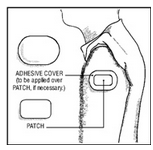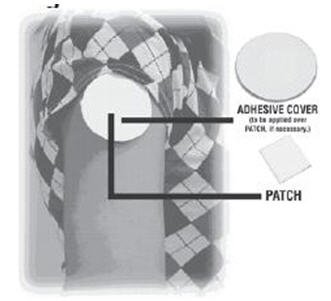where to apply clonidine patch Slsi.lk
Today, I want to talk about a medication called Clonidine. It is often prescribed in the form of a patch that you apply to your skin. This medication can be helpful for various conditions, and I wanted to provide you with some information about it.
What is Clonidine?
 Clonidine is a medication that belongs to a class of drugs called alpha-agonists. It works by stimulating alpha receptors in the brain that help to lower blood pressure. This can be particularly helpful for individuals who have high blood pressure or are experiencing withdrawal symptoms from opioids or other substances.
Clonidine is a medication that belongs to a class of drugs called alpha-agonists. It works by stimulating alpha receptors in the brain that help to lower blood pressure. This can be particularly helpful for individuals who have high blood pressure or are experiencing withdrawal symptoms from opioids or other substances.
Using the Clonidine Patch
 The Clonidine patch is a transdermal patch, which means it is applied directly to the skin. The patch is typically worn on a hairless area of the upper arm or chest, and it should be changed every 7 days. It is important to follow the instructions provided by your healthcare provider on the proper application and removal of the patch. Make sure to clean the area before applying a new patch to ensure proper adhesion.
The Clonidine patch is a transdermal patch, which means it is applied directly to the skin. The patch is typically worn on a hairless area of the upper arm or chest, and it should be changed every 7 days. It is important to follow the instructions provided by your healthcare provider on the proper application and removal of the patch. Make sure to clean the area before applying a new patch to ensure proper adhesion.
Potential Side Effects
As with any medication, Clonidine can have potential side effects. Some common side effects may include drowsiness, dry mouth, constipation, and dizziness. These side effects are usually mild and temporary. However, if you experience any severe or persistent side effects, it is important to contact your healthcare provider.
Precautions
It is important to inform your healthcare provider about any medical conditions you have, as well as any medications you are currently taking. Clonidine may interact with certain medications, such as blood pressure medications and antidepressants. Additionally, it is important to avoid consuming alcohol while taking Clonidine, as it can enhance the sedative effects of the medication.
Conclusion
Clonidine is a medication that can be beneficial for individuals with high blood pressure or those experiencing withdrawal symptoms. The Clonidine patch is a convenient and effective way to administer this medication. However, it is important to follow the instructions provided by your healthcare provider and be aware of any potential side effects or precautions.
If you are considering Clonidine as a treatment option, make sure to consult with your healthcare provider to determine if it is the right choice for you. Your healthcare provider will be able to provide you with more information and guidance based on your specific needs and medical history.
If you are looking for Clonidine - wikidoc you’ve came to the right web. We have 5 Pics about Clonidine - wikidoc like Instructions for a Clonidine Patch - YouTube, slsi.lk - how long for sulfatrim to work | Clonidine patch placement think and also slsi.lk - how long for sulfatrim to work | Clonidine patch placement think. Here it is:
Clonidine - Wikidoc

Clonidine Transdermal Drug Information On Uses, Side Effects
 fdb.rxlist.comclonidine transdermal patch mg weekly larger effects side dosing
fdb.rxlist.comclonidine transdermal patch mg weekly larger effects side dosing
Transdermal Clonidine Patch, Transdermal Clonidine Patch
myhomemadehappiness.comclonidine transdermal
Instructions For A Clonidine Patch - YouTube
 youtube.comclonidine patch instructions
youtube.comclonidine patch instructions
Slsi.lk - How Long For Sulfatrim To Work | Clonidine Patch Placement Think
 slsi.lkClonidine transdermal. Clonidine patch instructions. Clonidine transdermal patch mg weekly larger effects side dosing
slsi.lkClonidine transdermal. Clonidine patch instructions. Clonidine transdermal patch mg weekly larger effects side dosing